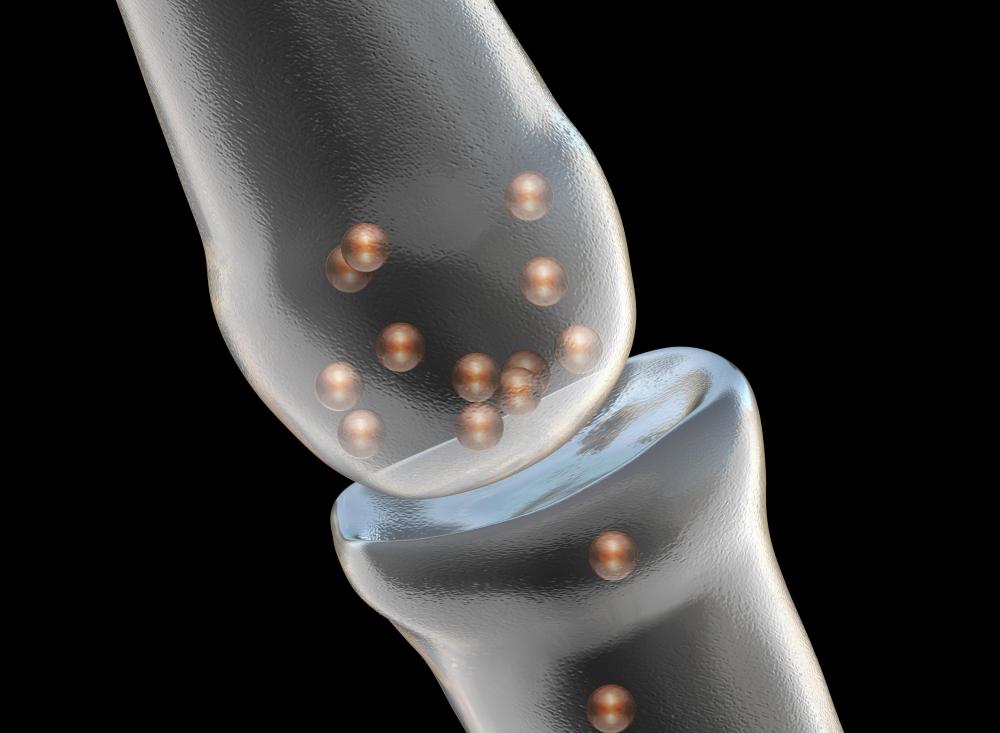At TheHealthBoard, we're committed to delivering accurate, trustworthy information. Our expert-authored content is rigorously fact-checked and sourced from credible authorities. Discover how we uphold the highest standards in providing you with reliable knowledge.
What Is the Function of Dendrites?
Dendrites are tiny branches on the ends of neurons that are responsible for passing information that is gathered from other neurons to the cell nucleus. Some research has also shown that their function does not change, but that their structure can, depending on environmental influences.
The parts of a neuron include dendrites, synapses that are located on the dendrites, and the soma. Synapses are the tips of dendrites, shaped like little clubs, and provide contact points with surrounding neurons. The soma is the cell body of a neuron that receives information collected by the dendrites. From the soma, the information travels to the axon for further processing.

Ultimately, the primary function of dendrites is to gather electrochemical information from other neurons and keep the process going from one neuron to the next. Neurons are grouped by which direction the dendrites receive and transmit information through the brain. Sensory neurons have dendrites that gather information from the sensory receptors and send it to the central nervous system. Those of motor neurons send information from the sensory receptors to glands and muscles.

Although there are different types of neurons, the function of dendrites remains the same. Without them, information cannot be passed between neurons, and nerve cells cannot relay information through the brain or nervous system. Dendrites are consistently gathering and passing information, all within a time of less than a second. After each signal is received and passed, each neuron resets so that, if the next signal is stronger or weaker, it can be processed properly.

While this function generally remains unchanged, there are instances where it can be altered. These instances are usually caused by disorders that affect the transmission of information or the production of neurotransmitters that carry signals. Interference with signals can also be caused by some medications. Additionally, neurons can become overactive, relaying too much information at once, which makes it difficult for all of the information to get relayed properly.

The structure of dendrites can change. Research has shown that certain factors affect the shapes or patterns dendrites form, and learning has been shown to lengthen them, which makes the collection and transmission of information easier and faster. On the other hand, dendrites can shrink from damage caused by certain things, such as alcoholism, which can cause a delay in how they transmit information.
AS FEATURED ON:
AS FEATURED ON:















Discussion Comments
I remember dendrites from science class all those years ago. It's funny how some things like this stick with you, even though you may not have thought about them in years.
I recall doing several diagrams for biology class of different parts of the human body. I did everything from the skeleton to cells and even dendrites.
I always thought they looked like branches on a tiny tree in winter. They were totally bare and stuck out in every direction.
@shell4life – I agree. I didn't know until I read this article that dendrites reset themselves. This is awesome, because it makes them super sensitive to what is going on around and in the body.
They aren't like slow, old computers that take awhile to update or refresh. They are like high-powered advanced computers that stay on top of things.
The human body is simply amazing in its design. Tiny dendrites are so delicate and so complex at the same time, and we rely on something so small for signals of sensation and signals to react to it.
Post your comments